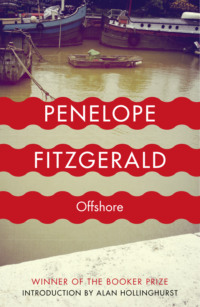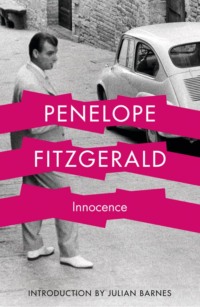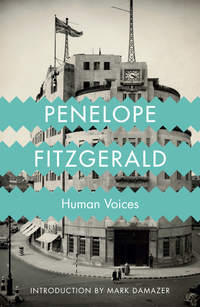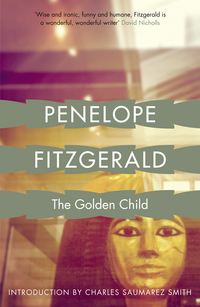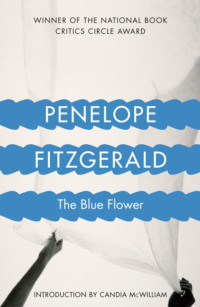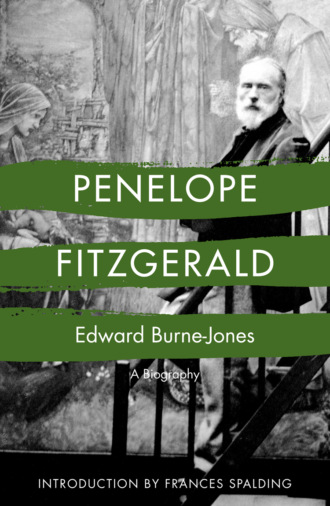
Полная версия
Edward Burne-Jones



Dedication
To Valpy, Tina and Maria
CONTENTS
Cover
Title Page
Dedication
Penelope Fitzgerald: Preface by Hermione Lee, Advisory Editor
Introduction
Picture Acknowledgements
Foreword and Acknowledgements
1. 1833–53: A childhood without beauty
2. 1853–5: Oxford: loss and gain
3. 1855–6: Morris and Jones; the quest for a vocation
4. 1856: An apprenticeship to Rossetti
5. 1856–60: The long engagement
6. 1860–2: Expansion: the firm, Ruskin and Italy
7. 1863–5: Green Summer: a season of happiness
8. 1865–6: Friends and enemies
9. 1866–7: A threat to the Earthly Paradise
10. 1867–70: Phyllis and Demophoön: the dangers of enchantment
11. 1870–6: The desolate years
12. 1876–8: A return to the world: the Grosvenor Gallery
13. 1878–84: King Cophetua: the studio in the eighties
14. 1884–90: The Royal Academy: ‘to think, Jones, of your coming to this!’
15. 1890–2: Briar Rose: Burne-Jones in the nineties
16. 1892–4: ‘The best in me has been love’
17. 1894–6: The Kelmscott Chaucer and the parting of friends
18. 1896–8: Rottingdean and Avalon
Picture Section
Appendix 1: Sources
1. Unpublished Material
2. Select Bibliography
Appendix 2: Paintings by Burne-Jones mentioned in the text and now in public collections
Notes to the Text
Index
By the Same Author
Copyright
About the Publisher
Penelope Fitzgerald Preface by Hermione Lee, Advisory Editor
When Penelope Fitzgerald unexpectedly won the Booker Prize with Offshore, in 1979, at the age of sixty-three, she said to her friends: ‘I knew I was an outsider.’ The people she wrote about in her novels and biographies were outsiders, too: misfits, romantic artists, hopeful failures, misunderstood lovers, orphans and oddities. She was drawn to unsettled characters who lived on the edges. She wrote about the vulnerable and the unprivileged, children, women trying to cope on their own, gentle, muddled, unsuccessful men. Her view of the world was that it divided into ‘exterminators’ and ‘exterminatees’. She would say: ‘I am drawn to people who seem to have been born defeated or even profoundly lost.’ She was a humorous writer with a tragic sense of life.
Outsiders in literature were close to her heart, too. She was fond of underrated, idiosyncratic writers with distinctive voices, like the novelist J. L. Carr, or Harold Monro of the Poetry Bookshop, or the remarkable and tragic poet Charlotte Mew. The publisher Virago’s enterprise of bringing neglected women writers back to life appealed to her, and under their imprint she championed the nineteenth-century novelist Margaret Oliphant. She enjoyed eccentrics like Stevie Smith. She liked writers, and people, who stood at an odd angle to the world. The child of an unusual, literary, middle-class English family, she inherited the Evangelical principles of her bishop grandfathers and the qualities of her Knox father and uncles: integrity, austerity, understatement, brilliance and a laconic, wry sense of humour.
She did not expect success, though she knew her own worth. Her writing career was not a usual one. She began publishing late in her life, around sixty, and in twenty years she published nine novels, three biographies and many essays and reviews. She changed publisher four times when she started publishing, before settling with Collins, and she never had an agent to look after her interests, though her publishers mostly became her friends and advocates. She was a dark horse, whose Booker Prize, with her third novel, was a surprise to everyone. But, by the end of her life, she had been shortlisted for it several times, had won a number of other British prizes, was a well-known figure on the literary scene, and became famous, at eighty, with the publication of The Blue Flower and its winning, in the United States, the National Book Critics Circle Award.
Yet she always had a quiet reputation. She was a novelist with a passionate following of careful readers, not a big name. She wrote compact, subtle novels. They are funny, but they are also dark. They are eloquent and clear, but also elusive and indirect. They leave a great deal unsaid. Whether she was drawing on the experiences of her own life – working for the BBC in the Blitz, helping to make a go of a small-town Suffolk bookshop, living on a leaky barge on the Thames in the 1960s, teaching children at a stage-school – or, in her last four great novels, going back in time and sometimes out of England to historical periods which she evoked with astonishing authenticity – she created whole worlds with striking economy. Her books inhabit a small space, but seem, magically, to reach out beyond it.
After her death at eighty-three, in 2000, there might have been a danger of this extraordinary voice fading away into silence and neglect. But she has been kept from oblivion by her executors and her admirers. The posthumous publication of her stories, essays and letters is now being followed by a biography (Penelope Fitzgerald: A Life, by Hermione Lee, Chatto & Windus, 2013), and by these very welcome reissues of her work. The fine writers who have done introductions to these new editions show what a distinguished following she has. I hope that many new readers will now discover, and fall in love with, the work of one of the most spellbinding English novelists of the twentieth century.
Hermione Lee
2013
INTRODUCTION
If you stand in front of a large Burne-Jones painting, such as King Cophetua and the Beggar Maid in Tate Britain, or any other of his major works in oil, stained glass or tapestry, the modern world immediately recedes. The spell cast is hard to resist. No other English artist in the late nineteenth century so completely transports us into another realm where literary or mythological allusions meld with gently refulgent colour, in compositions that have been cunningly designed and elaborately finessed. The subtle strength of Burne-Jones’s imagery owes much to his study of the Italian Renaissance, and in his work we find the last great flowering of the Renaissance tradition before modernism ran like a virus through all the arts, here and there turning its back on the past while determinedly heralding the importance of modernity. Burne-Jones, whose preference in art was for stillness, remained a stalwart opponent: having been brought up in Birmingham, in close proximity to some of the most damaging aspects of the Industrial Revolution, he famously announced that ‘the more materialistic science becomes, the more angels shall I paint’.
Burne-Jones’s response to the age in which he lived resonates with present-day anxieties about the social, cultural, financial and political implications of globalisation. Yet there are many reasons why he is so deeply sympathetic. The high-minded and deeply earnest John Ruskin cannot have been easy to tease, but when pseudo-Gothic and medieval public houses began to appear on street corners, Burne-Jones gently provoked him with the remark, ‘Your doing, my dear.’ Penelope Fitzgerald’s biography gives us Burne-Jones’s humour as well as his idealism, the man and his art, while tracing the trajectory of a career that transformed Ned Jones into Sir Edward Burne-Jones, the internationally renowned artist who was socially much in demand. Penelope Fitzgerald’s narrative teems with famous figures from the Victorian era, and inevitably it is bound up with the history of Pre-Raphaelitism, for although Burne-Jones and his friend William Morris were not part of the original Pre-Raphaelite Brotherhood, they were drawn in during the late 1850s by D. G. Rossetti. Burne-Jones’s early, painstakingly detailed pen-and-ink drawings on Arthurian subjects equal in intensity the finest productions in this vein. He went on to make more robust the Pre-Raphaelite achievement, while Morris busily created outlets for its decorative style, through his determination to revive craft and to reform domestic design.
Penelope Fitzgerald seems at home amid this crowded setting. Admittedly, the six years she spent researching and writing this book gave her an impressive intimacy with her subject. But also relevant here is the fact that she herself was descended from a formidable tribe. There were three bishops in her family background, and immediately after she completed this biography, she wrote The Knox Brothers about her father (the writer and editor who brought Punch into the twentieth century) and her uncles, among whom was the Anglo-Catholic priest Ronald Knox who, after agonies of indecision, ‘poped’, then wrote about his spiritual journey and became a famous apologist for Roman Catholicism. From The Knox Brothers alone, quite apart from her later novels and her biography of the poet Charlotte Mew, it is evident that Fitzgerald understood the complex tensions harboured by individuals and within families. She was well prepared for the entangled loyalties within the Pre-Raphaelite circle, its creative brilliance as well as its dysfunctional ingredients. As a biographer, her observations are wry and sane.
Burne-Jones’s mother died six days after his birth. He claimed that it left him with persistent guilt and made him ever after kind to women. The lack of a mother very probably triggered his desperate need for female affection. When he first met Georgiana Macdonald, who was to become his wife, she was only ten years old. They became engaged when Georgie was fifteen. Over the years, this small woman had to put up with a great deal, not least the emotional crisis caused by Burne-Jones’s great passion for the Greek beauty Maria Zambaco and which was made worse by her public suicide attempt when he tried to extract himself from their relationship. Fitzgerald admires Georgie’s firmness, her dignity and steadfastness. Others have remarked that she gazed at the world through pale grey eyes: Fitzgerald adds that these eyes ‘did not so much seem to reprove small mindedness as refuse to admit its existence at all’.
The Birmingham of Burne-Jones’s childhood had showed him that advancing industrialisation brought in its wake moral squalor. In response to this he looked back to medieval times, to what he felt to be a more pristine world, and fed his mind on chivalric ideals. Fitzgerald understands this well: ‘What he knew from his own experience was that beauty was an essential element without which human nature is diminished. If art gives us beauty it will make us more like human beings.’ Amid the casual flow of imagery that surrounds us today, this argument may seem bluntly utilitarian and overly simplistic. But there is no doubt that Fitzgerald here identifies one of Burne-Jones’s core beliefs. In old age his need for beauty sharpened his obsession with young women. He became completely besotted with one after another, including May Gaskell, to whom he wrote often five or six times a day, Fitzgerald reminding us that in this period there were in all seven posts in the course of a single day. It did not seem to matter to him that she was married. ‘Mrs Gaskell, if not firm, must have been a tactful woman,’ Fitzgerald remarks. ‘She managed a difficult situation extremely well.’
This dry authorial voice is one of the pleasures of this book. Another is the use of idiosyncratic detail. Whistler, who favoured full-length portraits, is glimpsed weeping over his inability to capture on canvas the tightly trousered legs of his patron Frederick Leyland. After an outing which Burne-Jones made with three others, there is a trip back into London by means of a hired fly because one of the party, Ellen Terry, has suddenly taken against the train and refuses ‘to get into the nasty thing’. And when Burne-Jones becomes a regular guest at country house parties, Fitzgerald reminds us how icily cold such houses could be, ‘so that the ascent to the bedroom, candle in hand, was like an Arctic expedition’. We learn that once back in London, the artist took to meeting his young women in the heated Palm House at Kew Gardens. No wonder Georgie at one point goes in search of a country retreat where her husband can be removed from the fray of life. She travels to Brighton, turns her back on it, and walks over the Downs to Rottingdean. Here she finds an empty house on the village green which is promptly bought. One of its attractions was that the view from the back looked on to the Downs. From the front, the biographer notes, ‘you could see the solid little grey church, which had survived gales and fires and even the restorations of Gilbert Scott’.
Fitzgerald’s narrative repeatedly excites with the interest that surrounds Burne-Jones’s artistic development. She takes us inside the studio, identifies recurrent themes, tracks commissions and recognises the importance of exhibitions, particularly those held at the Grosvenor Gallery where the rich brocades and theatrical décor set off his art to perfection. ‘From that day’, his wife writes, with reference to its opening exhibition in 1877, ‘he belonged to the world in such a sense that he never had done before, for his existence became widely known and his name famous.’ Less happy was his relationship with the Royal Academy of Arts, from which he eventually resigned; and at the famous Whistler vs Ruskin trial he loyally, if reluctantly, gave evidence on Ruskin’s behalf, which Whistler never forgave or forgot. Fitzgerald is an able guide to many things, but brings expert knowledge of flowers to Burne-Jones’s use of them in his paintings. She evidently travelled far in search of his pictures, his decorative schemes and stained glass, and, although her critical analysis remains pleasingly light, she can be very discerning. His art, she concludes, is ‘based on ideas and treatments that had lingered for years in his mind, a mind that was obliged to repeat certain obsessional patterns corresponding to the inner life’.
Alongside the procession of paintings that runs through this book are the many friendships which Burne-Jones enjoyed with writers and artists: with Swinburne and George Eliot; with ‘Tad’ – Sir Lawrence Alma-Tadema, the jocular painter of domestic scenes in ancient Greek and Roman times – with the painter of moral allegories G. F. Watts, with Ford Madox Brown, Val Prinsep and others. To some extent Fitzgerald’s rich knowledge of Victorian art may have been stimulated by her friendship with the White Russian émigré and former Tate curator, Mary Chamot, who knew a great deal about Burne-Jones and kick-started the research for this book by lending its author the notebook Burne-Jones filled during a trip to Italy in 1871, a fact mentioned in Hermione Lee’s indispensable biography of Penelope Fitzgerald.
The overall tone of Fitzgerald’s biography of Burne-Jones is affectionate and admiring. But it does not ignore the tragic notes, which increase as time goes on. Burne-Jones is particularly saddened by the mental confusion that engulfed Ruskin and by Morris’s decline. He is deeply moved by the sight of Morris’s coffin on a haywain decorated with moss and entwined with striplings of willow. It was the exact opposite, Fitzgerald notes, of Lord Leighton’s funeral, for the former President of the Royal Academy had lain in state in Burlington House before a public procession took him to his funeral at St Paul’s Cathedral. But it was Morris, not Leighton, that Burne-Jones had in mind when he wrote to May Gaskell,‘… the King was being buried, and there was none other left’. Throughout this book, the reader’s sympathy with Burne-Jones steadily deepens. Fitzgerald describes him at the beginning of 1898, aged sixty-five, his clothes now frequently crumpled, unlike the ‘ridged’ trousers worn by his fashionable son Phil, after much careful ironing. Burne-Jones was, we are told, ‘more puzzled than ever by a world which was too arrogant to recognise that its restlessness was the result of a neglect of beauty’. Under the influence of this book’s persuasive portrait, it is hard not to agree.
Frances Spalding
2014
PICTURE ACKNOWLEDGEMENTS
Permission to reproduce illustrations has been kindly given by the following: Victoria & Albert Museum for photographs of Mrs Pat Campbell, May Morris, William Morris, Margaret Burne-Jones and Kate Vaughan; Sotheby’s on behalf of a private owner for Georgiana Burne-Jones by Burne-Jones; British Museum for cartoons of Burne-Jones in middle age (from Letters to Katie, by permission of Macmillan London and Basingstoke); London Borough of Hammersmith Public Libraries for photographs of the Burne-Jones and Morris families, Georgiana Burne-Jones by Edward Poynter, Edward Burne-Jones and his son Phil, and Edward Burne-Jones and Angela Mackail; St Cecilia’s Window, Christ Church Cathedral, Oxford, by kind permission of the Dean and Chapter of Christ Church Cathedral.
While every effort has been made to trace the owners of copyright material reproduced herein, the publishers would like to apologise for any omissions and would be pleased to incorporate missing acknowledgements in future editions.
FOREWORD AND ACKNOWLEDGEMENTS
Burne-Jones regarded with gloomy distaste the prospect of becoming the subject of a biography. Yet he was a late Romantic, whose pictures, on his own admission, are a series of images scarcely to be understood without a knowledge of the life which projected them. In this book I have tried to trace faithfully the daily life with its successes and disasters which he accepted with a modest irony peculiarly his own, and the inner life of a painter who might have said, with Jung: ‘If I had left these images hidden in my emotions, they might have torn me in pieces.’
Any biographer of Burne-Jones must start from the Memorials collected during the six years after his death by his wife Georgiana, and from the materials for it which she deposited in a tin box in the Fitzwilliam Museum. There are, however, many other sources, particularly for the second part of his career, from 1870 to 1898. Most of the bibliography given at the end of this book consists of contemporary accounts and reminiscences. But beyond these there are diaries, notebooks and work-lists and more than three thousand letters written by Burne-Jones to his friends, who kept them out of affection, even when they were asked to throw them away
My gratitude is due to the following people for their kindness and hospitality, and for generously allowing me to make use of papers in their possession: Miss Mary Chamot, who encouraged me to begin to research, and Professor W.E. Fredeman, who explained to me how to set about it; Mr Oliver Bagot, Mr Francis Cassavetti, Mrs Imogen Dennis, Lord Hardinge of Penshurst, the Dowager Lady Hardinge of Penshurst, Mr George Howard, Mrs Celia Rooke, Mr Lance Thirkell, Lady Tweedsmuir and the Society of Antiquaries of London.
I should also like to thank the following people who have answered enquiries and helped me in many different ways: Mrs Raymond Asquith, Lord Baldwin of Bewdley, Mme Marielle de Baissac, Mr Wilfrid Blunt, Mr Toby Buchan, Dr Raymond Chapman, Mr Charles Carrington, Mr Leslie Cavan, Lord and Lady Clwyd, Mr Norman Colbeck, Dr Malcolm Easton, Professor Leon Edel, Dr Irmgard Feldhaus (Clemens-Sels Museum), Lady Gibson, Miss Phyllis Giles (Fitzwilliam Museum Library), Sir William Gladstone, Professor Gordon Haight, Miss L.F. Hasker (Hammersmith Borough Libraries), Mr Philip Henderson, Miss Helen Henschel, Mr Charles Jerdein, Mr Jeremy Maas, Lady Mander, Professor Roderick Marshall, Mrs June Moll (University of Texas at Austin), Mr David Masson (Brotherton Collection, University of Leeds), Mr Tom Nelson, Mr Peter Norton, Mr Richard Ormond, Mrs Dorothy Parish, Mr Terry Pepper, Mrs Louis Reynolds, Mrs Mary Ryde, Mr A.C. Sewter, Mr E.E.F. Smith (Clapham Antiquarian Society), Mr D.E. Clayton-Stamm, Miss Susie Svoboda, Mr E.F. Thomas (churchwarden of St Margaret’s, Rottingdean), Mr W.S. Taylor, Mr F.H. Thompson (Society of the Antiquaries of London), Mr Raleigh Trevelyan, Mrs Elizabeth Wansbrough, Miss M. Walls (The Grange Museum, Rottingdean). In particular I should like to thank Mr John Christian for his patience and expert knowledge in correcting the typescript; the staff of the Print Rooms of the British Museum, the Fitzwilliam Museum, the Victoria & Albert Museum, the Watts Galleries, Compton, the William Morris Galleries, Walthamstow; and my own family.
The following publishers have kindly given permission for extracts quoted in the text: George Allen & Unwin (The Winnington Letters edited by Van Akin Burd); Peter Davies Ltd (The Macdonald Sisters by Lord Baldwin, and The Young du Maurier edited by Daphne du Maurier); the Yale University Press (The Letters of George Eliot edited by Gordon S. Haight).
P.M.F.
1 1833–53
A CHILDHOOD WITHOUT BEAUTY
Edward Burne-Jones was born on 28 August 1833, as Edward Coley Burne Jones, the only surviving child of Edward Richard Jones. He never knew his sister, who died in infancy, nor his mother, who died a few days after his birth, but he felt all through his life that he had lost them and sorely missed them.
Mr Jones was a not even moderately successful Birmingham gilder and frame-maker. He was probably of Welsh descent, but his ancestry is lost among many Joneses; as Burne-Jones pointed out when he at last took the step of hyphenating his name; to be called Jones is to ‘face annihilation’. He did not know the Christian names of his grandparents on either side: his mother might have been more likely to keep the family annals, but she was dead.
The widower and his pale, delicate, unassertive little son continued to live over the shop, sharing a small bedroom overlooking the timber-yard behind it, where the raw wood for the frames was kept. Every Sunday, after listening to an Evangelical sermon with other small tradesmen at St Mary’s, Whitall Street, they went to visit Mrs Jones’s grave, and Ned was frightened to see his father cry. ‘There’s one thing I owe to my father, that is his sense of pathos. Oh, what a sad little home ours was and how I used to be glad to get away from it.’1 Half-holidays also meant a visit to the churchyard where Mr Jones sometimes gripped his head so hard that he cried out with pain. This kind of commemoration did not strike him, then or afterwards, as strange. He only pointed out that, had he guessed then what adult life was like, he wouldn’t have passed his childhood in such a ‘needlessly saddish manner’.2 His clothes were made out of what was left over from his father’s suits, every penny was saved, and Mr Jones, putting in long hours in the workshop, tiptoed up to bed so as not to wake the child. In an age of self-help, this father could show thrift and sobriety, but not confidence. His failure in business was the result of unworldliness and inefficiency in the craft itself; as a hard worker, he set an excellent example.
Housekeeping for the disconsolate family was undertaken by a Miss Sampson, described by Lady Burne-Jones as ‘uneducated, with strong feelings and instincts’. Ned recalled being sometimes given a penny and spending it on a ‘mutton-pie, sodden with rancid fat’3 as a relief from her cooking. It was Miss Sampson who told him, when he was building a child’s city of small stones, that ‘you must not call it Jerusalem, Edward’; she acted as a represser of fantasy, useful to a child whose imagination is strong enough to thrive on opposition and to become – as Burne-Jones pointed out – ‘his private torment’. Ways had to be devised early on to avoid telling Miss Sampson what he was thinking about, so that it could remain to trouble him. He suffered for as long as he could remember from bad dreams, and from waking to find ‘large anxious faces of grown-ups’ bending over him. It was his habit as an artist to speak of his dream world, where real and unreal mixed without priority, as if it were his own retreat, but in fact he never seriously entered it without apprehension.


